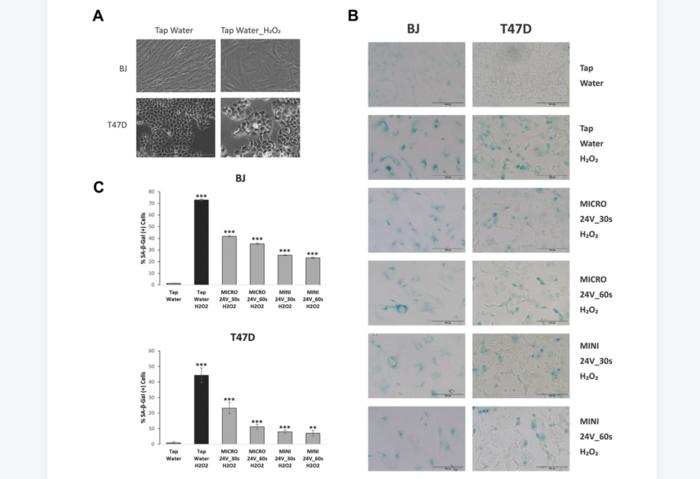Devastating Wildfires in the Andes: Impacts on Soil Health and Ecosystem Recovery
In September 2018, the Pichu Pichu volcano in Peru experienced a devastating wildfire that consumed nearly two thousand hectares of shrubland, impacting one of the most ecologically sensitive regions of the Andes. Unlike Mediterranean ecosystems, which have adapted to withstand fire through various evolutionary strategies, the volcanic soils found in Arequipa, one of the aridest […]


In September 2018, the Pichu Pichu volcano in Peru experienced a devastating wildfire that consumed nearly two thousand hectares of shrubland, impacting one of the most ecologically sensitive regions of the Andes. Unlike Mediterranean ecosystems, which have adapted to withstand fire through various evolutionary strategies, the volcanic soils found in Arequipa, one of the aridest regions globally, lack such resilience to wildfire disturbances. A research team from Miguel Hernández University of Elche (UMH) undertook a crucial study to delve into the consequences of this fire on the local soil and surrounding ecosystems. They meticulously collected and analyzed soil samples from the affected area at an altitude of 3,700 meters, scrutinizing how these vulnerable ecosystems reacted to the scorching flames that swept through them.
The findings of the study, which were later published in the Spanish Journal of Soil Science, shed light on an alarming reality. Four years post-wildfire, there has been a significant loss of soil organic carbon (SOC), an essential component for maintaining soil fertility. The research reveals that a combination of vegetation loss and post-fire erosion has contributed to this detrimental change. UMH professor Jorge Mataix Solera, a seasoned researcher with over three decades of experience in investigating post-fire soil recovery, emphasizes the particular vulnerability of the Peruvian Andes to wildfires. He cautions that although fire is a natural ecological agent, its impact can vary drastically depending on the specific ecosystem involved.
The degradation of soil properties following the fire has raised red flags regarding the ability of the Pichu Pichu ecosystem to recover from such disturbances. The deterioration in soil quality has not only stunted the recovery of local flora but has also hampered efforts to restore the area to its pre-fire condition. The multiplicative effects of soil combustion and subsequent erosion are critical concerns; they demonstrate the severe vulnerability of volcanic soils, which are characterized by their low capacity to retain moisture. This characteristic inherently makes them less resistant to fire-related damage, drawing attention from environmentalists and researchers alike.
In exploring the complex interplay between fire, soil, and vegetation, one of the significant challenges highlighted by the research is the propensity of these arid soils to repel water. This phenomenon is influenced by the unique organic matter in the soil combined with its high sand content. The researchers found that this water repellency intensified after the fire, further worsening erosion, as vegetation that would typically aid in moisture retention was diminished or lost entirely. The absence of plant life means that rainfall would primarily run off instead of soaking into the earth, which rapidly accelerates erosion and further degrades the soil.
As pointed out by UMH researcher Minerva García Carmona, understanding the effects of fire on these young, volatile soils is crucial. The study emphasizes the pivotal role of plants—not just as sources of combustible material in wildfires but as essential contributors to soil stability and health. The interaction between flora and soil becomes apparent, highlighting the necessity of protective vegetation for maintaining soil integrity, especially in regions that have not adapted to regular wildfire occurrences.
The research examined two significant native plant species whose roles are vital within this ecosystem: Berberis lutea, commonly referred to as the “palo amarillo del Perú,” and Parastrephia quadrangularis, or “tola.” The team investigated how fire impacted the soil dynamics based on the dominant vegetation present in the areas affected. Interestingly, their findings demonstrated that the soils in regions predominantly covered by Berberis lutea experienced greater degradation. This was attributed to the fact that this species, being larger and possessing higher biomass, contributed to more intense combustion effects during the wildfire.
With a wealth of experience in evaluating wildfire impacts on Mediterranean forests, the UMH researchers were struck by the unique challenges present in the volcanic soils of Arequipa. Their research highlights the glaring inadequacies in the resilience of these ecosystems when exposed to the threats of wildfires—particularly given their inability to retain moisture and recover swiftly after fire incidents. The findings signal an urgent need to prioritize research and conservation efforts in this fragile environment.
Pichu Pichu is situated within the central volcanic zone of the Andes, where the climatic conditions present a harsh landscape for any vegetation to thrive. Sampling was conducted at an elevation of about 3,700 meters, where annual precipitation is limited to an average of 385 mm, typically concentrated within a three to four-month period. The resulting environment can be characterized as a “cold desert,” with temperatures fluctuating between 4 and 18°C. This setting is predominantly occupied by drought-resistant shrubland, which faces constant threats from both climate variability and anthropogenic activities.
This region cannot be overlooked, as it is a crucial water source for surrounding areas. While the shrubland coverage is extensive, the foothills of Pichu Pichu are home to vulnerable forests and a rich diversity of wildlife. Among these areas are the queñua forests comprised of Polylepis species, which are endemic to Peru and currently face the risk of extinction. The ecological balance in Pichu Pichu hangs in the balance, and researchers are increasingly concerned about the long-term viability of such ecosystems under the strain of ongoing climate change and wildfire frequency.
The trend of rising wildfires in Peru is particularly alarmingly noticeable. Most wildfires in the country are reported annually between July and October, and satellite monitoring data indicated that in September 2024, the Queimadas project recorded an unprecedented 7,037 wildfire hotspots. In desert-like environments such as Arequipa, it becomes ever more imperative to understand how soils react under these evolving fire regimes, as this knowledge is critical for evaluating ecosystem resilience in the face of climate change.
Mataix emphasized the importance of continuous learning, as it will aid in the development of effective prevention strategies and post-fire recovery treatments that can mitigate the adverse impacts of rising temperatures and prolonged droughts. He pointed out that such strategies are just as vital in Peru as they are in regions like Spain or California. While fire, as a natural phenomenon, plays a role in many ecosystems, the climate crisis is intensifying these fire events, posing a greater threat to already vulnerable landscapes.
The study’s insights call for urgent attention to the significant challenges posed by wildfires in sensitive areas like Pichu Pichu. With the ramifications of climate change becoming increasingly evident, researchers and environmental advocates alike must work together to restore and safeguard these vital ecosystems. The implications of this research extend beyond the immediate geographic context of the Andes; they resonate globally in the ongoing discourse around climate resilience, land management, and the conservation of biodiversity in the face of escalating environmental threats.
The Pichu Pichu wildfire serves as a clarion call, underscoring the necessity for a comprehensive understanding of fire dynamics and soil-vegetation interactions. As the evidence mounts regarding soil degradation and its consequences, it becomes imperative that stakeholders, researchers, and policymakers come together to explore sustainable solutions that can reconcile ecological integrity with the realities of a changing climate.
Subject of Research: Not applicable
Article Title: Soil Degradation Evidence Following a Wildfire in Arequipa’s Andean Region, Peru
News Publication Date: 20-Jan-2025
Web References: Not applicable
References: Not applicable
Image Credits: Jorge Mataix Solera
Tags: Andes wildfires impact on soil healthecological sensitivity of Andean regionsecosystem recovery after wildfireslong-term effects of wildfires on soil fertilityMiguel Hernández University soil researchPichu Pichu volcano wildfire effectspost-fire erosion and vegetation lossshrubland fire consequencessoil organic carbon losssoil sample analysis in Peruvolcanic soil resilience to firewildfire disturbances in arid ecosystems
What's Your Reaction?

































